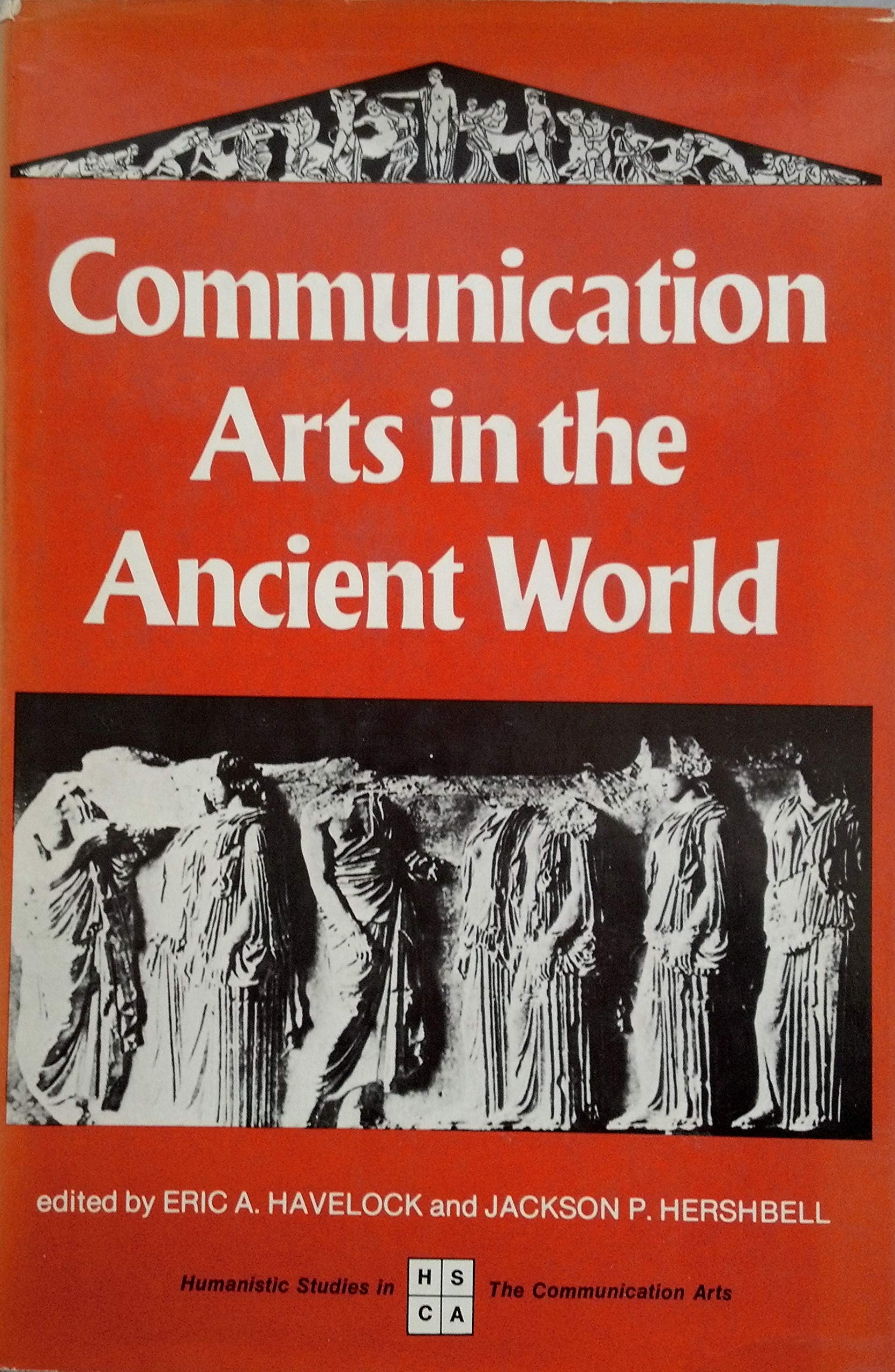Eric A. Havelock, Jackson P. Hershbell (eds.): Communication Arts in the Ancient World (1978)
Filed under book | Tags: · alphabet, antiquity, communication, literacy, media, media history, oral culture, orality, poetry

A collection of ancient studies “devoted to exploring the beginnings of literacy in ancient Greece and Rome, and the effects of writing on these cultures.”
Publisher Hastings House, New York, 1978
ISBN 0803812523, 9780803812529
xiv+162 pages
Review: H. Curtis Wright (Journal of Library History, 1980).
PDF (19 MB)
Comment (0)Walter J. Ong: Orality and Literacy: The Technologizing of the Word (1982–)
Filed under book | Tags: · alphabet, language, literature, logocentrism, media history, oral culture, poetry, print, rhetoric, technology, text, writing

This classic work explores the vast differences between oral and literate cultures offering a very clear account of the intellectual, literary and social effects of writing, print and electronic technology.
In the course of his study, Walter J. Ong offers fascinating insights into oral genres across the globe and through time, and examines the rise of abstract philosophical and scientific thinking. He considers the impact of orality-literacy studies not only on literary criticism and theory but on our very understanding of what it is to be a human being, conscious of self and other.
First published in 1982 by Methuen & Co. Ltd
Publisher Routledge, 2002
New Accents series
ISBN 0415281296, 9780415281294
204 pages
PDF (1982/2002, updated on 2014-11-23)
Comment (0)Mario Carpo: Architecture in the Age of Printing: Orality, Writing, Typography, and Printed Images in the History of Architectural Theory (1998/2001)
Filed under book | Tags: · architecture, media, oral culture, print, typography, writing

“The discipline of architecture depends on the transmission in space and time of accumulated experiences, concepts, rules, and models. From the invention of the alphabet to the development of ASCII code for electronic communication, the process of recording and transmitting this body of knowledge has reflected the dominant information technologies of each period. In this book Mario Carpo discusses the communications media used by Western architects, from classical antiquity to modern classicism, showing how each medium related to specific forms of architectural thinking.
Carpo highlights the significance of the invention of movable type and mechanically reproduced images. He argues that Renaissance architectural theory, particularly the system of the five architectural orders, was consciously developed in response to the formats and potential of the new printed media. Carpo contrasts architecture in the age of printing with what preceded it: Vitruvian theory and the manuscript format, oral transmission in the Middle Ages, and the fifteenth-century transition from script to print. He also suggests that the basic principles of “typographic” architecture thrived in the Western world as long as print remained our main information technology. The shift from printed to digital representations, he points out, will again alter the course of architecture.”
Originally published as L’architettura dell’età della stampa. Oralità, scrittura, libro stampato e riproduzione meccanica dell’immagine nella storia delle teorie architettoniche, Milan: Jaca Book, 1998.
Translated by Sarah Benson
Publisher MIT Press, 2001
ISBN 0262032880, 9780262032889
246 pages
PDF (removed on 2018-4-28 upon request from publisher)
Comment (0)
